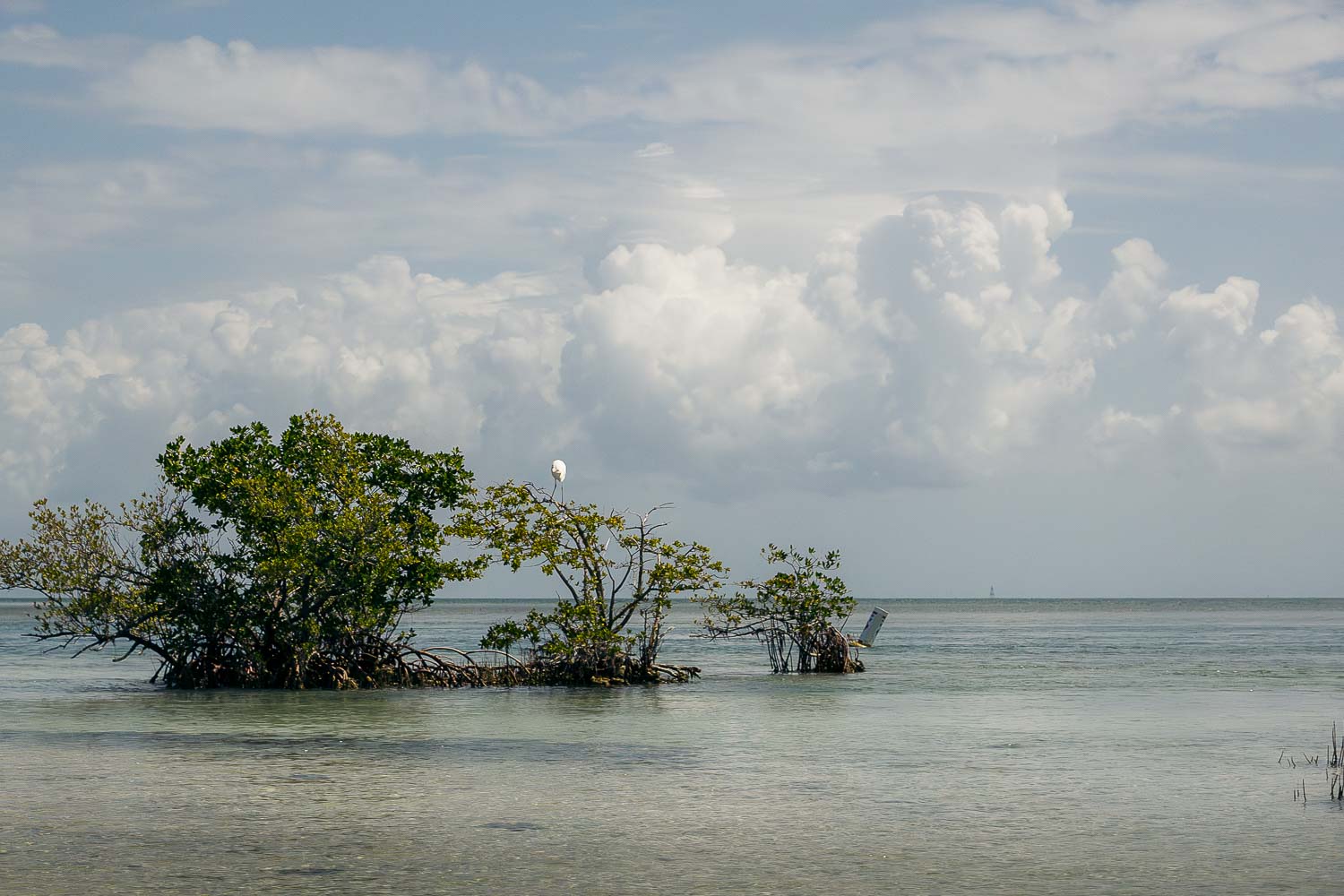Home to the third world’s largest reef system, Biscayne National Park, Florida, offers a wide range of things to do on the water and some interesting sites to explore on its keys and the mainland.
Last updated: December 12, 2025
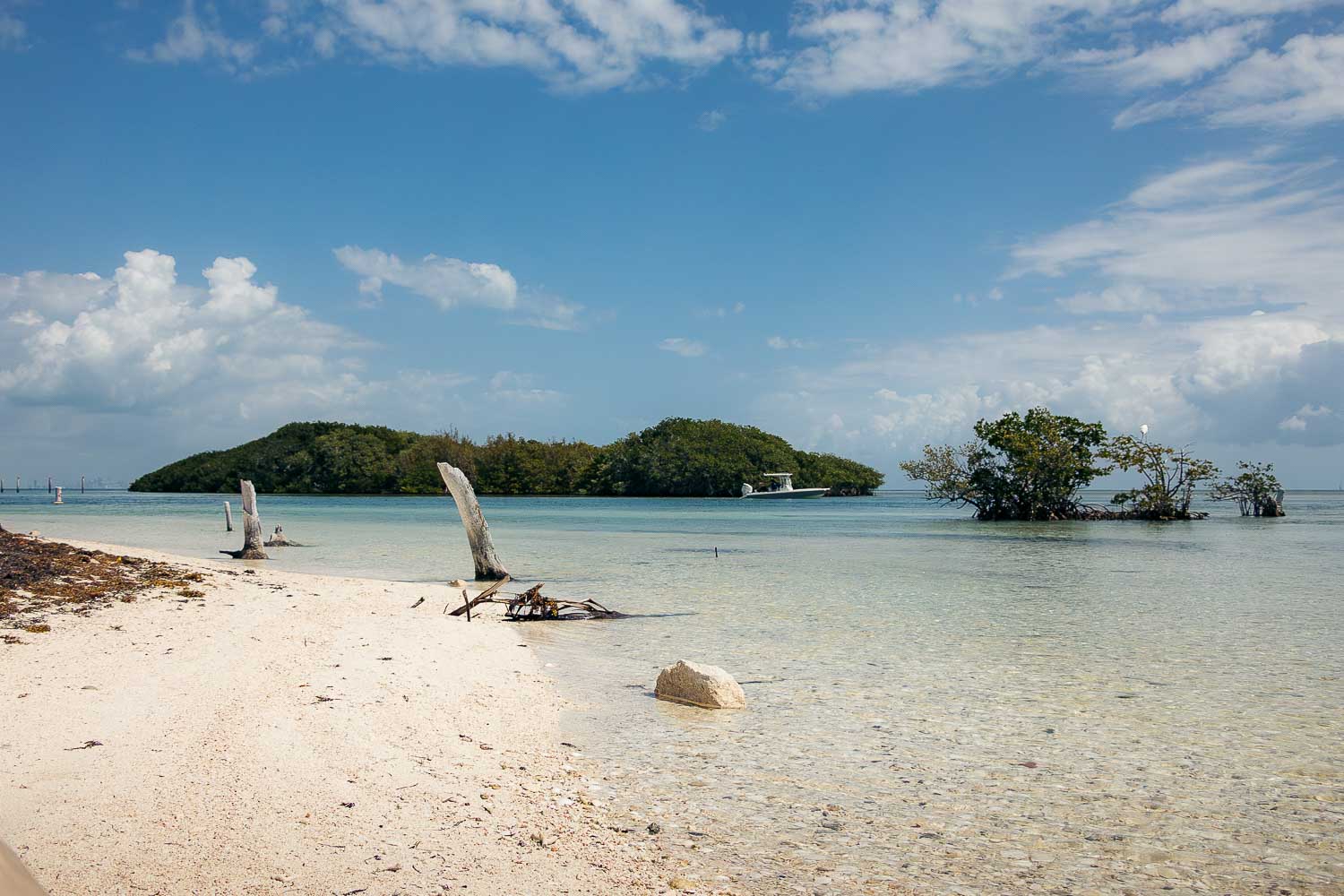
A Word about Biscayne National Park
Nestled in the southeastern corner of Florida, to the right of Everglades National Park, Biscayne National Park is the most bio-diverse area in the national park system. 95% of the park consists of water. The remaining 5% include the Dante Fascell Visitor Center with the adjacent Jetty Trail and 42 keys, or tiny islands, located within Biscayne Bay.
Keys within Biscayne National Park
Biscayne’s keys derive their name from the Spanish word “cayo”, which means small island. Over time, the word “cayo” evolved into “key” and was used to describe the archipelago near the southern tip of Florida.
The keys in Biscayne National Park are primarily bio-created. In other words, they grew on the skeletons of coral reefs.
All keys, except for three, are undeveloped, devoid of any man-made structures. The islets that have some human presence now or once where privately owned and lived on are Adams Key, Boca Chita, Elliott Key, Porgy Key, Old Rhodes Key, and Totten Key. Visiting some of these keys and learning the history of the area is one of the first things you want to do in Biscayne National Park.
The majority of Biscayne’s keys have dense mangrove forests. Mangrove’s roots stabilize the coastline and create a natural support system for the islands. On the flip side, the mangrove trees spread across the entire keys, leaving no space for even a primitive campground.
READ MORE: 2 Days Island Hopping in the Florida Keys
Wildlife in Biscayne National Park
The area abounds with marine wildlife. In fact, considering its unique environment, getting underwater to observe the rich animal kingdom is one of the best things to do in Biscayne National Park. The region is home to various fish species, including barracuda, sea turtles, manatees, dolphins, sharks, American crocodiles, and coral reefs.
There are no alligators in Biscayne National Park, according to our guide. Alligators live in freshwater. Salty and brackish (a mix of fresh and salt) waters are the domains of crocodiles.
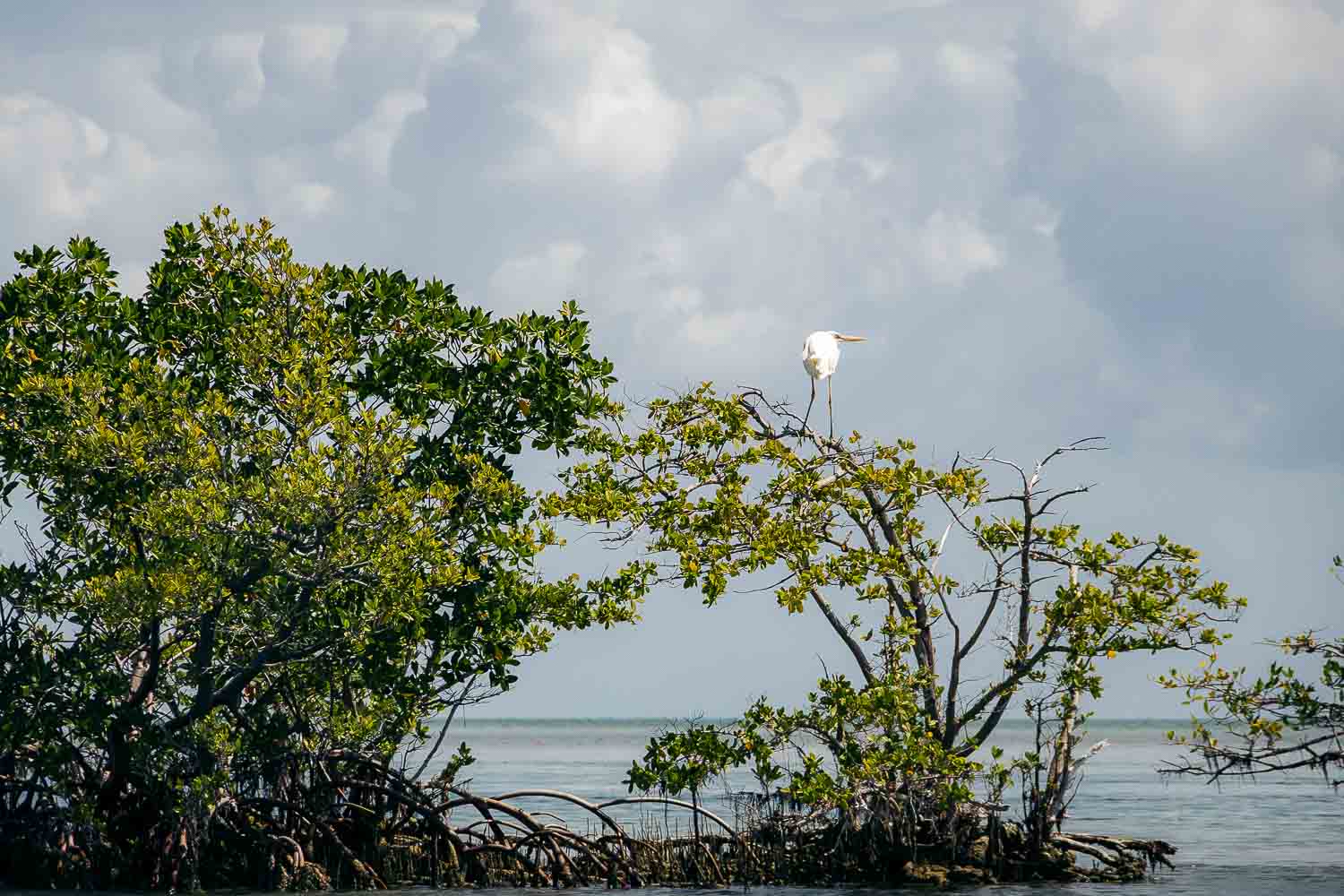
THINGS TO DO IN BISCAYNE NATIONAL PARK
Due to its unique nature and the water-comprising terrain, Biscayne National Park offers plenty of things to do on and under the water. Things to explore on land in Biscayne National Park, however, are limited.
It’s one of a few national parks in the U.S. (you encounter a similar issue in Kenai Fjords National Park in Alaska) where a guided tour is not just an option, but an opportunity to see and learn about the area’s unique flora and fauna.
1. Take a Guided Tour of Biscayne National Park
Getting on a boat is the first thing you should plan for while visiting Biscayne National Park. Tours range in time, intensity, and the degree of immersion into the sea realm of the area. Consequently, your chances of encountering marine wildlife in the park grow or diminish according to the activity and tour you choose.
We opted for a Heritage of Biscayne Cruise. Suitable for all ages, it’s one of a few excursions that doesn’t require you to get into the water. The tour lasts 3.5 hours. During this time, the team of a captain and a guide takes you across Biscayne National Park, slowing down near historic keys that have shaped the human history of the region.
While never submerging into the water, if you are lucky, you get to see some of Biscayne marine life, including dolphins and manatees.
The best thing about the Biscayne National Park tour is the opportunity to explore one of three historic keys, Boca Chita Key, Elliott Key, or Adams Key. The key stop is determined based on the weather conditions on that day.
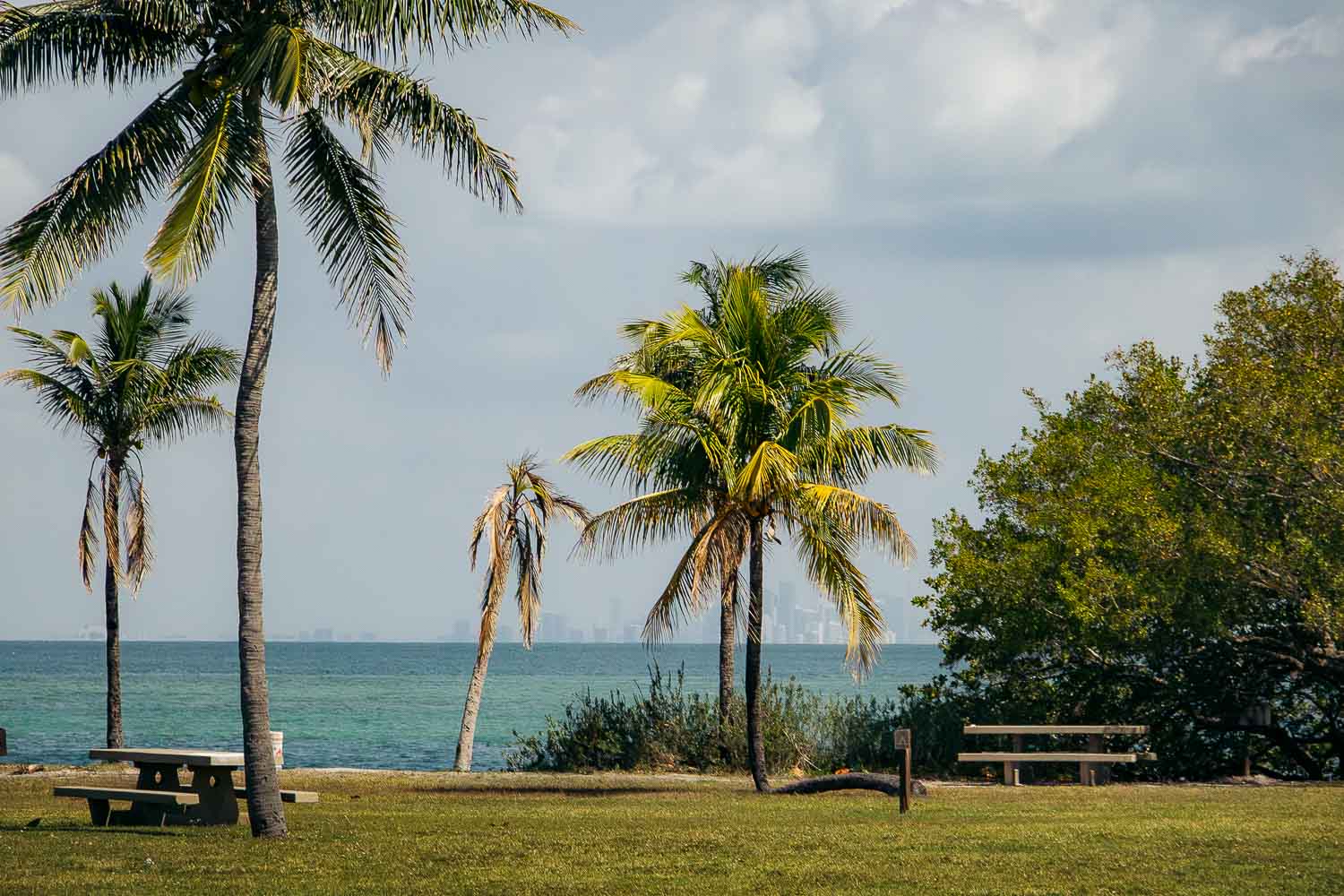
2. Explore Boca Chita Key
Boca Chita is one of the most visited keys in Biscayne National Park. Soaking up Florida sun on a white sandy beach in the company of friends and family is one of the favorite things to do in the Biscayne Bay area.
Located roughly 40 minutes away from Miami by boat, Boca Chita entices beachgoers and weekend visitors with the imposing views of skyscrapers of Miami in the distance, a historic lighthouse, a 10-minute hiking trail, and beautiful beaches. With that said, the key gets pretty packed at the end of the week when Miami’s boat owners and their friends gather on the isle for a barbecue fiesta.
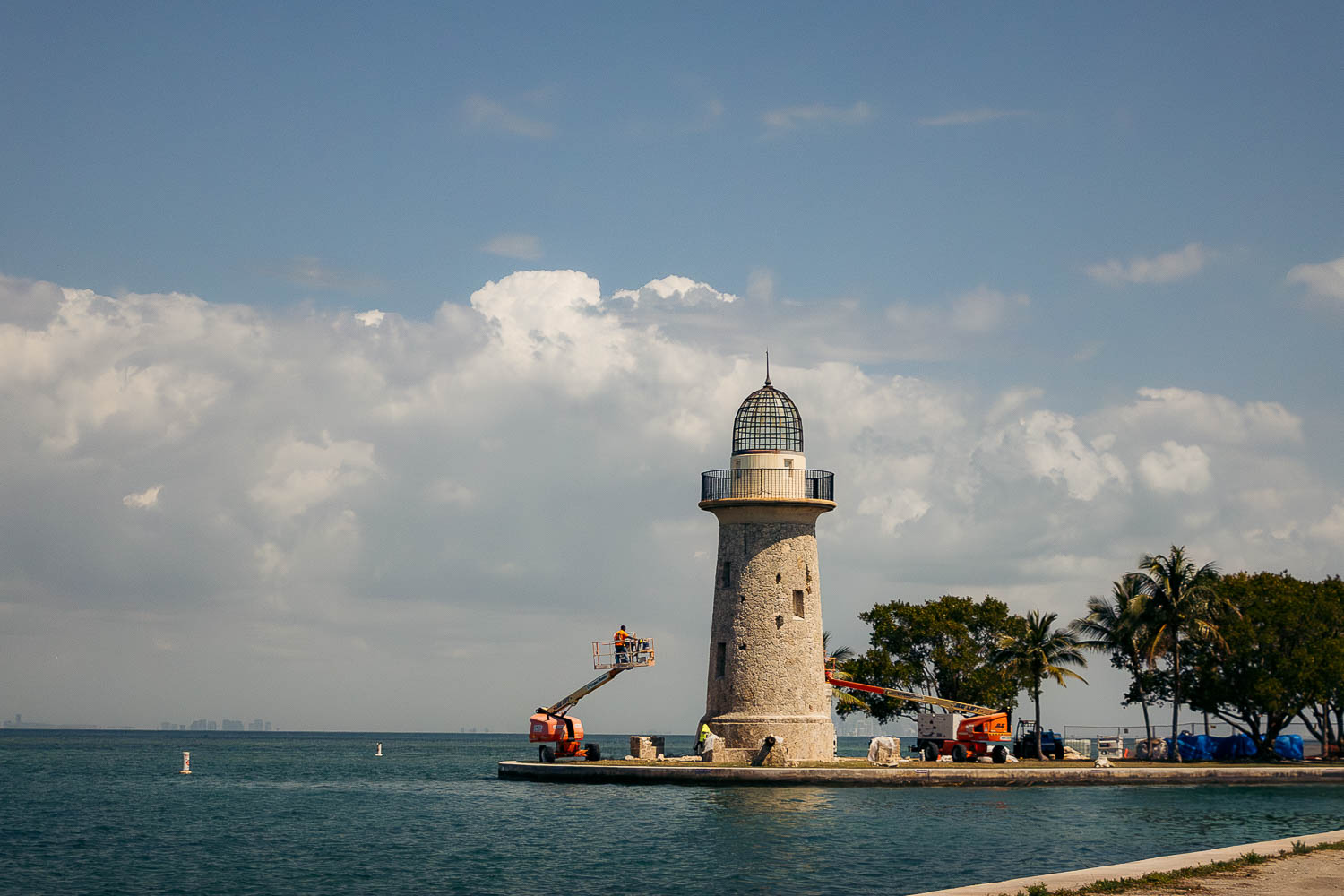
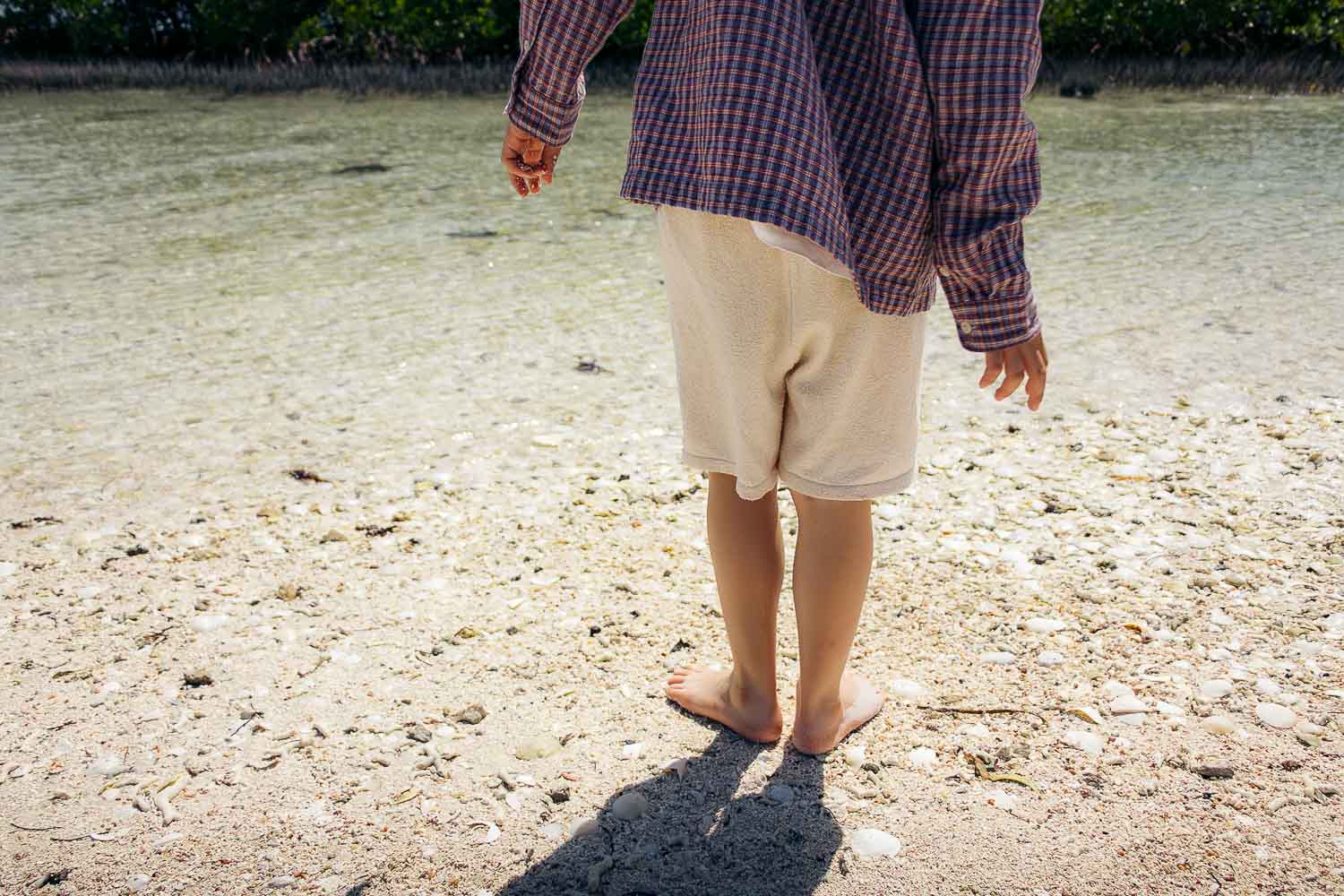
3. Visit Elliott Key
Unlike Boca Chita Key with its Miami party crowds, a trip to Elliott Key is one of the best things to do in Biscayne National Park for families or when you long for a more secluded Biscayne Bay experience.
The key is the largest of the three visited islands. Yet the developed area where you can camp, have a picnic, or laze at the boat dock is no bigger than on the other two keys. Apart from it, Elliott Key has two hiking trails where you can stretch your legs after a boat ride.
How to Get: Similar to all other keys in Biscayne National Park, Elliott Key is accessible only by private boats, water taxis, or guided boat tours.
4. Visit Adams Key
The least “developed” island of the three of them, Adams Key falls into the category of things that the majority of Biscayne National Park’s visitors skip. Once a popular vacation spot for the wealthy, including presidents Harding, Hoover, Johnson, and Nixon, the island has only two structures today. Both are available for park’s rangers and their families to stay in, but are closed to the public.
Hiking on Adams Key is another thing that visitors of Biscayne National Park can’t agree upon. The only trail is short and may be overgrown. So, it’s not exactly easy to hike along. And mosquitoes are present most of the year.
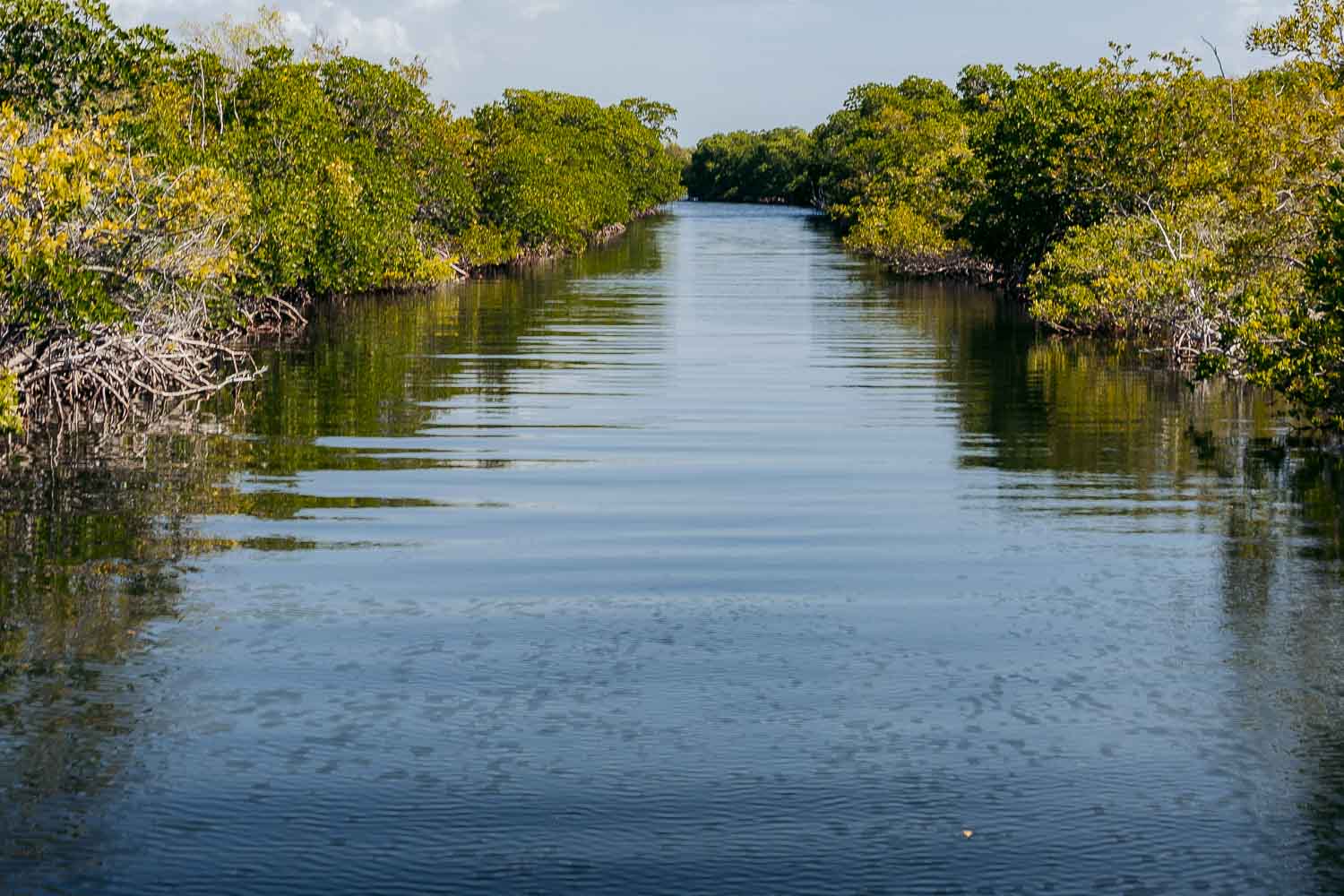
5. Snorkel in Biscayne National Park
Snorkeling and scuba diving are two of the most popular things to do in Biscayne National Park. You have quite many choices here, from snorkeling near mangrove’s roots at Boca Chita Key or Elliott Key where lots of fish live to exploring reef corals.
Some of the most beautiful places to snorkel in the park are the waters below the Fowey Rocks Lighthouse, a historic structure built in 1876 to mark the reef, and along the Maritime Heritage Trail.
How to Get: You can operate a private boat or dive into the best snorkeling spots in Biscayne National Park with a guide during a snorkeling tour. Only authorized concessionaires are allowed to conduct guided tours within Biscayne National Park.
The one that we used is the Biscayne National Park Institute. This non-profit organization offers various daily excursions to choose from and the best options to explore the bay and learn many interesting things about the past and present of Biscayne National Park.
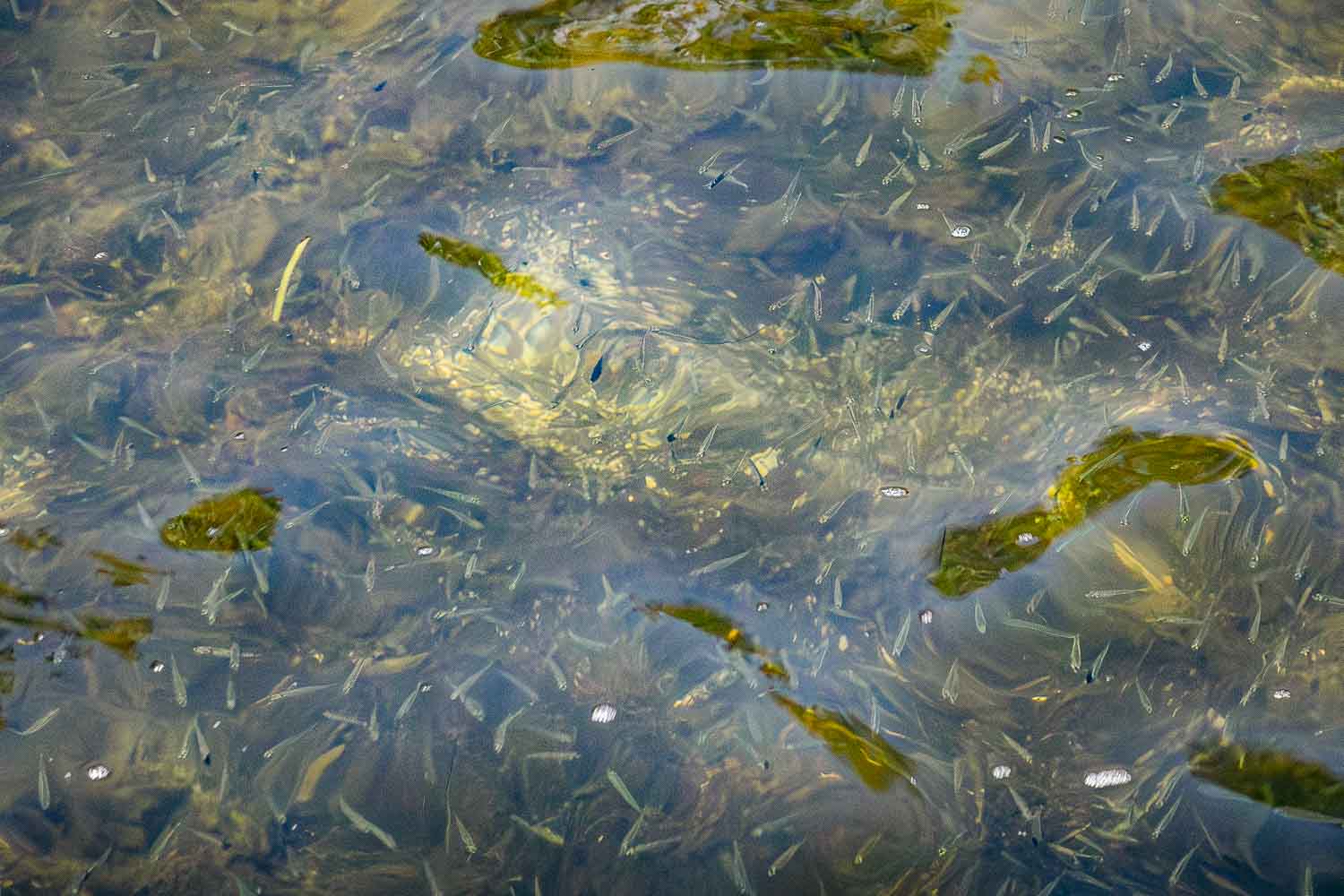
6. Explore the Underwater World along the Maritime Heritage Trail
Exploring the historic and bio-diverse Maritime Heritage Trail is one thing that the majority of Biscayne National Park’s visitors can’t skip. In essence, the Maritime Heritage Trail is a mapped route that includes six shipwrecks. The wrecks span nearly a century and differ in sizes and vessel types.
The newest addition to the trail is the Fowey Rocks Lighthouse. While the structure peering above the water is not accessible, at the base, it teems with fish. If snorkeling is your thing then the underwater part of the lighthouse is where you want to start Biscayne National Park’s journey.
READ MORE: The Underwater World of Maui: Atlantis Submarine Adventure
7. Kayak or Paddle in Jones Lagoon
Every day is a good day to go kayaking or stand-up-paddle boarding in Jones Lagoon. One of the favorite things to do in Biscayne National Park, paddling in Jones Lagoon offers excellent marine wildlife watching opportunities. Keep your eyes peeled for a wide variety of fish, baby sharks, turtles, and seabirds galore.
How to Explore: Again, if you have a private boat, you are free to explore Jones Lagoon on your own. Otherwise, look for an authorized guide. The Biscayne National Park Institute is one of the most reliable organizations in the area. It takes care of all the logistic matters, including the gear, and informs you about the history and different ecosystems of Biscayne National Park.
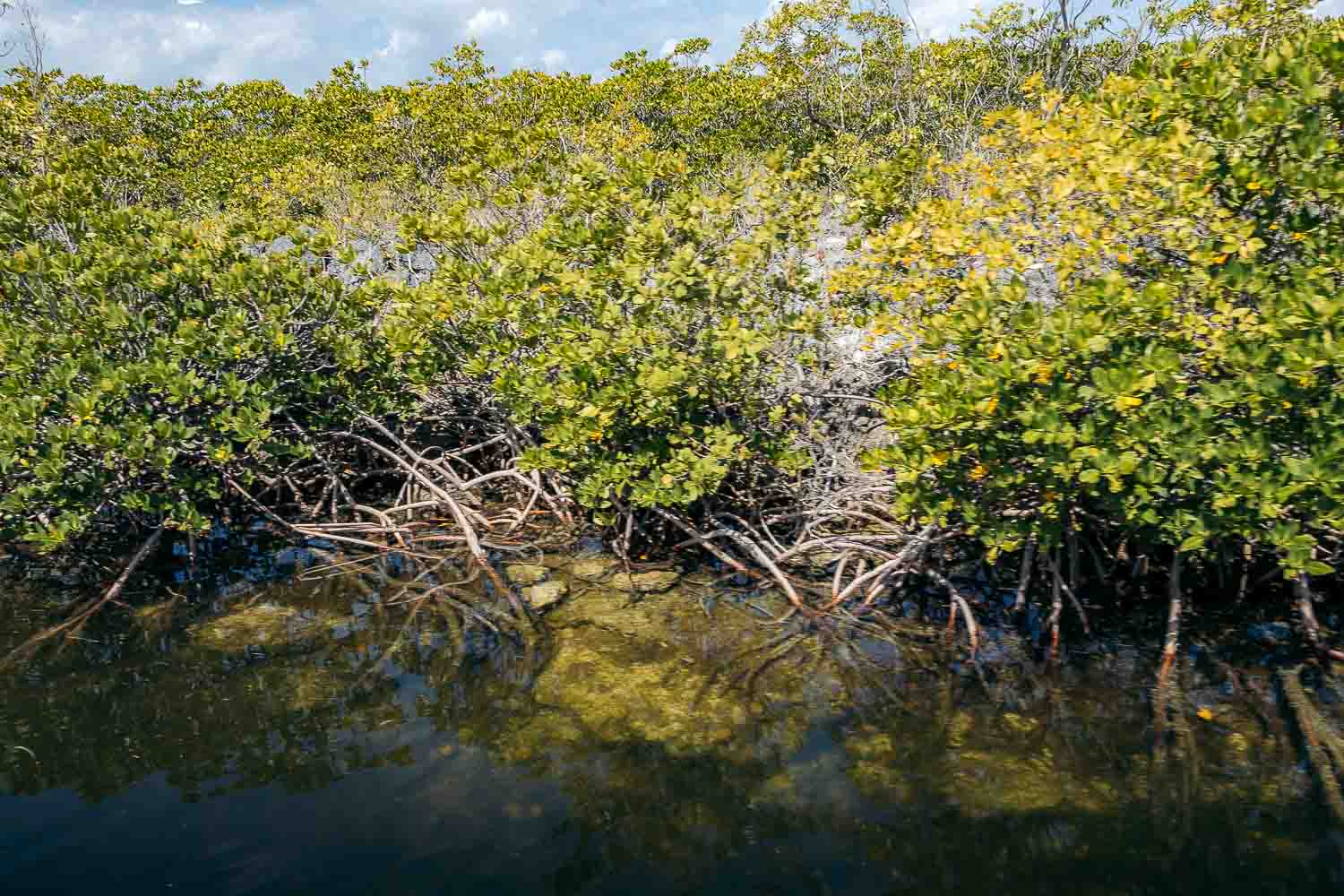
8. Stop at Dante Fascell Visitor Center
The Dante Fascell Visitor Center is more than just a place to get maps and information about Biscayne National Park. The center is a starting point of every guided tour operated by the Biscayne National Park Institute.
While waiting for your ride, check out artifacts, interpretive signs, and get your introduction lesson to various things to do on the land and on the water in Biscayne National Park.
9. Hike the Convoy Point Jetty Walk
Biscayne National Park doesn’t boast a large number of walking trails, making hiking the least popular thing to do in Biscayne Bay. The most popular trail here is the Convoy Point Jetty Walk.
The Jetty Trail at Convoy Point is a 0.8-mile (round-trip), well-maintained path with a trailhead right behind the Dante Fascell Visitor Center. You can walk as slow or as fast as you want, taking breaks on many benches along the trail, fishing, or admiring birds and the schools of small fish on both sides of the jetty. The trail ends at the Colonial Bird Protection Area.
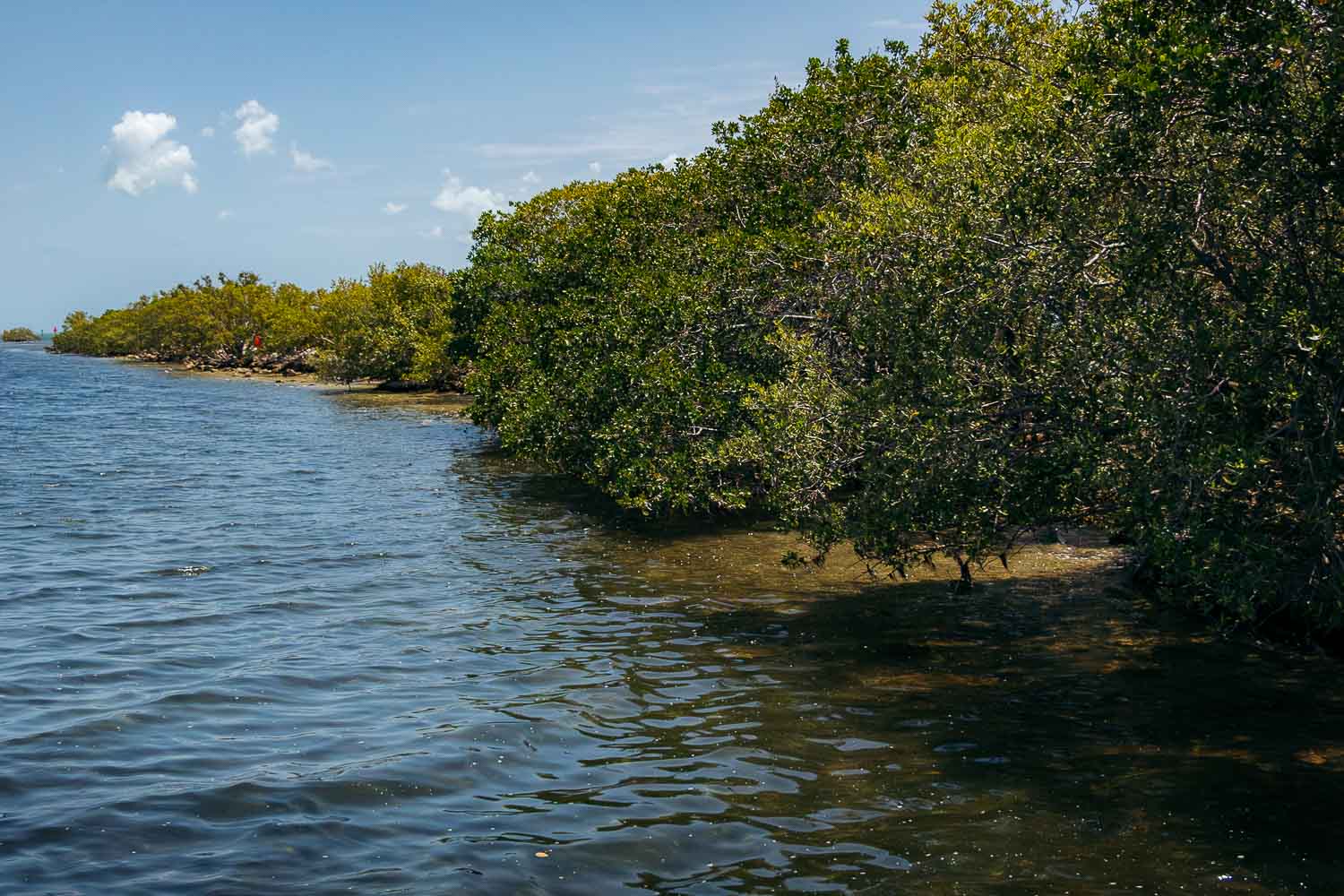
10. Cruise around Stiltsville
The history of Stiltsville, a collection of houses built on stilts in Biscayne Bay, dates back to the 1930s, some 50 years before Biscayne National Park was created.
During the time when Florida banned alcohol and gambling, some wealthy “entrepreneurs” took their businesses to the sea. Small buildings were constructed offshore of Miami. These stilt houses became bars, clubs, and gambling centers. At the high point, there were 27 buildings out in the water in Biscayne Bay.
Sometime in the 1960s, Florida prohibited new constructions in the bay. Over the years, disasters and natural forces reduced the number of the buildings in Stiltsville to six.
How to Visit: Stepping foot on any of these properties is illegal. Visits are allowed only by permits. Without the pass, the best way to see the historic sites in Biscayne National Park is by cruise through Stiltsville on your own or during a guided tour.
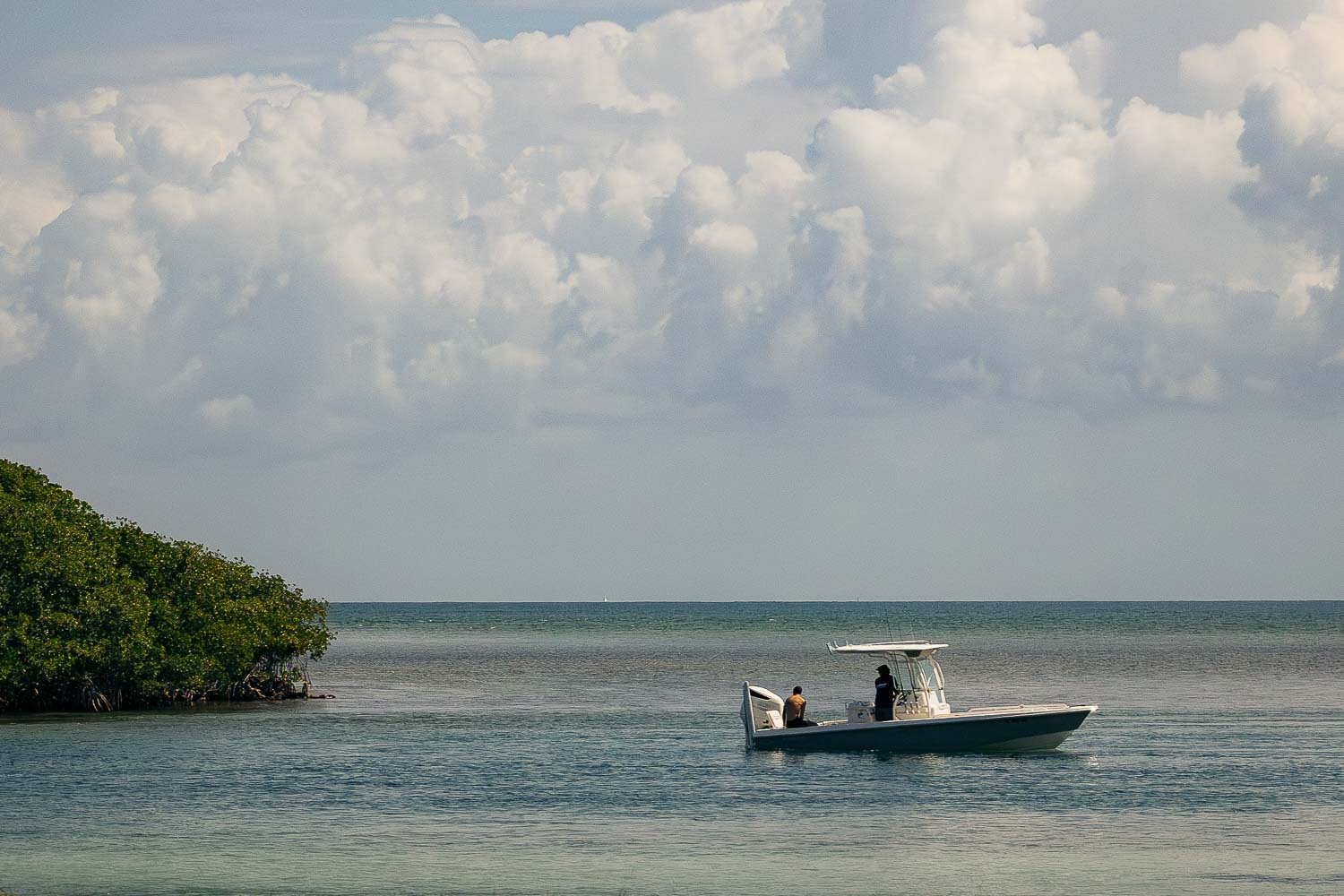
Things to Know before Visiting Biscayne National Park
- Admission: There is no entrance fee to visit Biscayne National Park.
- Hours: The national park is open 24 hours a day, 365 days a year.
Best Time to Visit Biscayne National Park
Biscayne National Park is open year round. The dry season with cooler temperatures is November through April. The seas can also be rougher. But overall, it’s a beautiful time to visit Biscayne National Park.
May through October is considered the wet season. It’s hot. It rains a lot. And mosquitos are burdensome.
The hurricane season in Florida starts in July and lasts through November. Disruptions in travel plans may be inevitable during this time.

